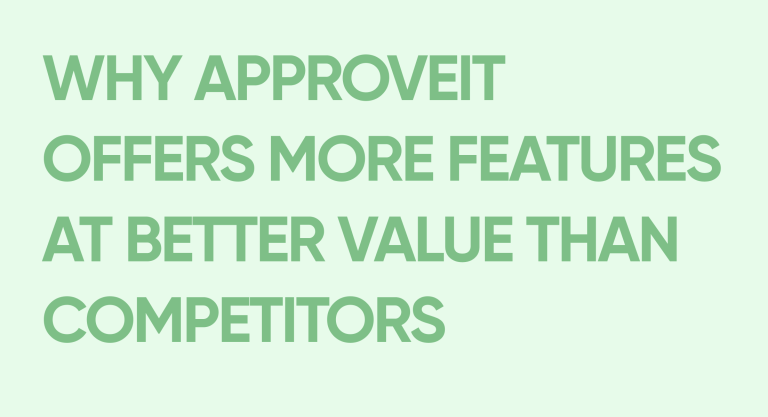
Vendor Management 101: From Onboarding to Relationship Cultivation
- Procurement
- 7 min read
Vendor management is a critical component of any business’s operations. It involves more than just acquiring products or services from suppliers. Effective vendor management spans the entire vendor lifecycle, from onboarding to performance evaluation. We will delve into all aspects of vendor management, providing practical advice to help you optimize each stage of the process.
Now, let’s explore each aspect of vendor management in detail.
1. Vendor Onboarding
This is the first touch point of your business with a new vendor, so you need to make it as friction-free as possible – the onboarding process will set the tone for your future supplier relationships.
Understanding Vendor Selection
Selecting the right vendors is the foundation of effective vendor management. Conduct thorough research, assess their capabilities, and consider their track record. Look beyond cost; evaluate factors like reliability, reputation, and alignment with your organization’s values.
Documentation and Compliance
Ensure all necessary documentation, licenses, and certifications are in place before onboarding a vendor. Compliance with legal and regulatory requirements is crucial. Develop a clear onboarding checklist to streamline the process.
Setting Clear Expectations
Communicate your expectations clearly to the vendor from the outset. Define performance metrics, delivery schedules, and quality standards, and explain to your vendors the way you want them to follow your guidelines.
Practical Advice: Regularly review your vendor selection criteria to adapt to changing business needs. Leverage vendor management software for a centralized repository of vendor information and documents. Automatically assign vendor approval requests and onboarding tasks using vendor management software.
2. Vendor Performance Monitoring
For successful vendor relationship development, you need to establish key components of your collaboration and quantify them. Those will be your KPIs.
Key Performance Indicators (KPIs)

Establish KPIs that are specific to your business goals and measure performance against these indicators regularly. Examples: on-time delivery, product quality, packing quality.
Regular Audits and Quality Checks
Some performance issues can be let go of easily while others demand immediate attention. Don’t wait for issues to escalate; proactively monitor vendor performance. Conduct regular audits and quality checks to identify and address potential or existing problems.
Many businesses resort to assigning performance scores to their vendors based on the abovementioned KPIs and manager reviews.
Continuous Improvement
Best practices are born from active collaboration and clear communication. Strive to continuously search for the aspects of your supplier collaboration that can and should be improved.
Practical Advice: Use performance data to negotiate improved terms or discounts with vendors. Foster transparency by sharing performance data with them, promoting accountability.
3. Contract Management
Transparent Contract Negotiation
Negotiate contracts transparently, ensuring both parties understand terms and conditions. Avoid vague language and include provisions for changes, if necessary. Legal review is essential to make sure everyone’s interests are protected.
Effective Contract Administration
Once contracts are signed, manage them efficiently. Use contract management software to track key dates, obligations, and deliverables. Regularly review contracts to ensure compliance and alignment with business goals.
Renewals and Terminations
Evaluate vendor relationships periodically. Renew contracts when they provide value, but be prepared to terminate contracts if performance deteriorates or better alternatives arise. No need to feel like a bad guy here – parting ways with your subcontractors is an essential part of any business.
Practical Advice: Consider implementing performance-based contracts tied to KPIs for increased accountability. Seek legal counsel when dealing with complex contracts. Use contract management software like Approveit to ensure all your contracts are valid, up-to-date and compliant.
4. Risk Management

Unexpected situations will always be a part of supply chain workflows, so instead of dreaming of avoiding them entirely, it’s better to develop a clear risk management strategy that will bring down to minimum your financial losses.
Identifying and Assessing Risks
Identify potential risks associated with each vendor relationship. These may include financial instability, supply chain disruptions, or cybersecurity vulnerabilities. Assess the impact and likelihood of each risk.
Mitigation Strategies
Develop risk mitigation strategies tailored to specific vendors. This might involve diversifying suppliers, implementing backup plans, or requiring vendors to maintain insurance coverage. Regularly revisit and update risk mitigation plans.
Contingency Planning
Prepare for worst-case scenarios with well-defined contingency plans. Ensure your team knows how to respond in case of vendor-related emergencies, minimizing disruption to your operations.
Practical Advice: Collaborate with vendors on risk mitigation to align efforts in safeguarding your business. Conduct regular risk assessments as your vendor portfolio evolves.
5. Communication and Collaboration
Open and Clear Communication
As we mentioned before in this article, we need to assess our requirements and expectations and communicate them to our vendors clearly, without leaving any space for misunderstanding. Foster open lines of communication with your vendors. Encourage them to share challenges, progress, and ideas. And should any issues arise, you’ll be ready to resolve them before they escalate.
Building Strong Relationships
Invest in building strong, trust-based relationships with your vendors. Meet face-to-face when possible, and engage in collaborative problem-solving. Recognize and reward exceptional performance.
It doesn’t hurt to get a little personal with your most trusted long-term partners. After all, life’s not always all work. People tend to do business more willingly with those they like personally – leverage that.
Conflict Resolution
How you handle it matters. Hear out every party seek win-win solutions and involve third parties when necessary. Don’t forget to prioritize your own business interests. Sometimes parting ways is also a resolution worth considering.
Practical Advice: Consider a vendor portal for shared access to important information and updates.
6. Cost Optimization
Cost Analysis and Reduction
Regularly analyze vendor-related costs. Identify opportunities for cost reduction through negotiation, consolidation, or process improvement, but always maintain a balance of cost savings with quality to avoid compromising value.
Value-based Vendor Selection
Look beyond the initial price tag when selecting vendors. Consider the total value they bring to your organization, including factors like innovation, reliability, and customer service.
Benchmarking
Benchmark vendor costs and performance against industry standards and competitors. Use this data to negotiate better terms and identify areas for improvement.
Practical Advice: Collaborate with vendors on cost-saving initiatives, such as bulk purchasing or process streamlining. Share cost savings benefits with them to strengthen partnerships. Nurture your relationships with those vendors who rise above the industry average.
7. Technology and Tools
Vendor Management Software
Invest in vendor management software to streamline processes, track performance, and centralize vendor information. These tools can automate routine tasks and provide valuable insights. Approveit is one good example of such tool.
Analytics and Reporting
Leverage analytics and reporting capabilities within vendor management software to gain actionable insights. Monitor trends, identify outliers, and make data-driven decisions.
Automation
Automate repetitive vendor management tasks where possible. This reduces manual effort and minimizes errors, allowing your team to focus on strategic activities.
Practical Advice: Continuously evaluate and update your technology stack to stay competitive and efficient. Provide training to your team to maximize software utilization. Monitor the market for new, cost-efficient solutions.
8. Vendor Relationship Cultivation
Long-term Partnerships
Strive for long-term, mutually beneficial partnerships with your vendors. Invest in their success and communicate your commitment to collaboration and growth. Long-term partners tend to work with you on better terms, they provide the best service and are always ready to lend you a hand should you need it.
Feedback and Improvement

Regularly solicit feedback from vendors on your organization’s performance as a customer. Use this feedback to improve your processes and strengthen relationships. Promote a healthy work environment that encourages people to speak of the issues they see in your workflows.
Mutually Beneficial Goals
Align your goals with your vendors’ objectives. When both parties share common interests, the relationship becomes more resilient and productive.
Practical Advice: Consider joint business planning sessions with key vendors to set strategic goals and initiatives. Celebrate milestones and successes together to reinforce the partnership.
In conclusion
Vendor management is a multifaceted discipline that requires careful planning, continuous monitoring, and proactive relationship building. By mastering each aspect from onboarding to relationship cultivation, you can enhance the efficiency, reliability, and value of your vendor relationships. Remember, successful vendor management isn’t just a cost-saving measure; it’s an investment in the long-term success of your organization.
Enjoyed the reading?
Subscribe to our fresh artiles, product updates and news

